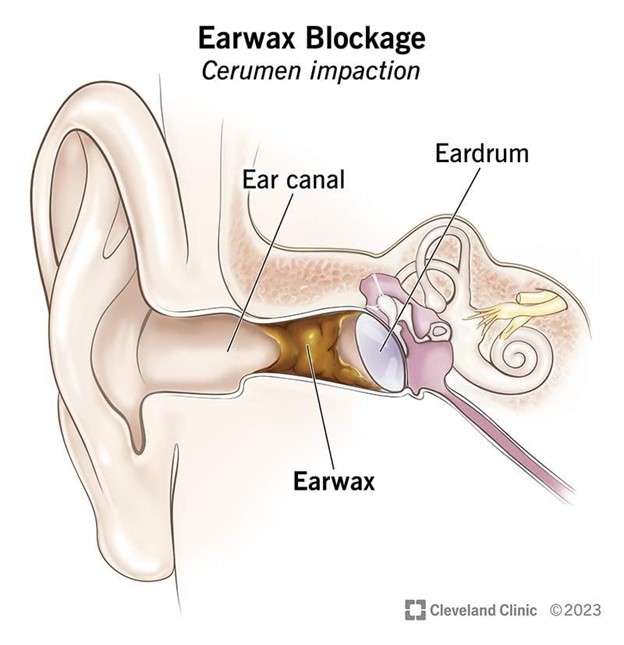A nurse is caring for a client who complains that he feels as though his ear is blocked and tells the nurse that he has a history of cerumen impaction in the external ear. The nurse, inspecting the ears for cerumen impaction, checks for which finding?
The presence of edema in the external auditory canal
A yellowish or brownish waxy material in the external auditory canal
Redness and swelling of the tympanic membrane
An external auditory canal that is longer than normal
The Correct Answer is B
Choice A Reason: The presence of edema in the external auditory canal is not a sign of cerumen impaction, but it may indicate other conditions such as otitis externa or allergic reaction.
Choice B Reason: A yellowish or brownish waxy material in the external auditory canal is a sign of cerumen impaction, as it shows that there is excess or hardened earwax that blocks the ear canal.
Choice C Reason: Redness and swelling of the tympanic membrane are not signs of cerumen impaction, but they may indicate other conditions such as otitis media or trauma.
Choice D Reason: An external auditory canal that is longer than normal is not a sign of cerumen impaction, but it may be a normal variation or a result of aging.

Nursing Test Bank
Naxlex Comprehensive Predictor Exams
Related Questions
Correct Answer is D
Explanation
Choice A Reason: Parkinson's disease does not result from too low acetylcholine as a result of an autoimmune reaction, but this may be a description of myasthenia gravis, which affects the neuromuscular junction.
Choice B Reason: Parkinson's disease is not caused by the deterioration of the myelin sheath of the basal ganglia, but this may be a description of multiple sclerosis, which affects the central nervous system.
Choice C Reason: Excess dopamine and deficient acetylcholine are not the two major causes of Parkinson's disease, but they are reversed. Parkinson's disease is caused by low dopamine and high acetylcholine levels in the brain.
Choice D Reason: Parkinson's is caused by depletion of dopamine and excess of acetylcholine, as this affects the balance between these two neurotransmitters that control movement and coordination.
Correct Answer is B
Explanation
Choice A Reason: The presence of edema in the external auditory canal is not a sign of cerumen impaction, but it may indicate other conditions such as otitis externa or allergic reaction.
Choice B Reason: A yellowish or brownish waxy material in the external auditory canal is a sign of cerumen impaction, as it shows that there is excess or hardened earwax that blocks the ear canal.
Choice C Reason: Redness and swelling of the tympanic membrane are not signs of cerumen impaction, but they may indicate other conditions such as otitis media or trauma.
Choice D Reason: An external auditory canal that is longer than normal is not a sign of cerumen impaction, but it may be a normal variation or a result of aging.

Whether you are a student looking to ace your exams or a practicing nurse seeking to enhance your expertise , our nursing education contents will empower you with the confidence and competence to make a difference in the lives of patients and become a respected leader in the healthcare field.
Visit Naxlex, invest in your future and unlock endless possibilities with our unparalleled nursing education contents today
Report Wrong Answer on the Current Question
Do you disagree with the answer? If yes, what is your expected answer? Explain.
Kindly be descriptive with the issue you are facing.
